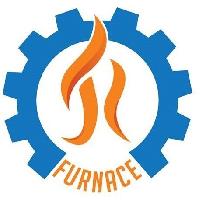Gas Nitriding Furnace: Precision Equipment for Controlled Thermochemical Processing

Posted by jrfurnace
from the Business category at
01 Aug 2025 03:59:10 am.
Design and Structure Overview
The typical structure of a gas nitriding furnace includes a vertical or horizontal chamber, fully enclosed and constructed to handle both high temperatures and corrosive nitriding gases.
Major components include:
Furnace Chamber: The main heating zone, cylindrical or box-shaped, is internally lined with high-temperature insulation materials and externally supported by a rigid steel shell.
Heating System: This may include electric resistance heating elements placed symmetrically to ensure uniform thermal distribution. The system is regulated by PID temperature controllers to maintain tight tolerances.
Gas Inlet and Distribution System: Precision flow meters and solenoid valves control the inflow of ammonia or other nitrogen-rich gases. A dedicated gas dispersion system ensures homogeneous distribution throughout the chamber.
Atmosphere Exhaust System: After decomposition, residual gases are directed through scrubbers or flare systems to ensure safe handling and discharge.
Sealing System: A gastight door with heat-resistant gaskets ensures a completely sealed environment to prevent external contamination or gas leakage.
The operation of a gas nitriding furnace is centered on the thermochemical interaction between nitrogenous gases and the base metal surface. The process is carried out at sub-critical temperatures, typically between 500°C to 550°C, depending on the material and treatment objective.
Key stages include:
Loading and Sealing: Components are loaded into the chamber, and the door is sealed using a high-temperature gasket system.
Pre-Heating: The furnace is gradually brought up to the desired process temperature using controlled ramp rates.
Gas Introduction: Ammonia or other nitriding gases are introduced into the furnace. These gases decompose upon contact with heated surfaces, releasing nitrogen.
Diffusion Phase: Nitrogen atoms diffuse into the metal surface under controlled temperature and time, while process variables are continually monitored and adjusted.
Cooling and Unloading: Once the nitriding cycle completes, the furnace is allowed to cool under a protective gas blanket before safe unloading.
A key feature of gas nitriding furnaces is their atmosphere regulation system. Maintaining a precise nitriding potential (Kn value) is essential for consistent and repeatable treatment cycles.
Atmosphere control equipment may include:
Ammonia Flow Controllers: Regulate and measure incoming gas volumes.
Dissociation Analyzers: Measure the percentage of ammonia dissociation, providing real-time data for control feedback.
Oxygen Probes and Kn Sensors: Monitor the chemical potential of nitrogen in the furnace atmosphere.
PLC-Based Automation Systems: Automate gas flow adjustments, cycle timing, and safety responses based on sensor inputs.
This integration ensures a stable processing environment with minimal operator intervention.
Construction Materials and Insulation
The construction materials used in a gas nitriding furnace are selected for durability, chemical resistance, and high thermal efficiency.
Shell: Heavy-duty carbon or stainless steel, depending on temperature and corrosion requirements.
Insulation: Multi-layered ceramic fiber modules, backed with firebricks or insulating castables, reduce heat loss and energy consumption.
Heating Elements: Typically made of Kanthal or Nichrome alloys, offering high resistance to both temperature and chemical exposure.
Special coatings and gas-sealed penetrations are often applied to reduce corrosion from ammonia decomposition byproducts.
Safety Systems and Automation
Given the use of flammable and reactive gases, gas nitriding furnaces are equipped with robust safety mechanisms and automation systems:
Interlocks: Prevent door opening under unsafe pressure or temperature conditions.
Gas Leak Detectors: Trigger alarms and emergency shutdown in case of leakage.
Purge Cycles: Flush the chamber with inert gases before and after the process to ensure safety.
Remote Monitoring: Advanced furnaces offer cloud-based or local monitoring of temperature, gas flow, and process status.
All critical safety systems comply with international industrial furnace safety standards.
Conclusion
A Gas Nitriding Furnace represents a highly specialized piece of thermal processing equipment designed for controlled, gas-phase nitriding treatments. Its advanced atmosphere control, precise temperature regulation, and robust construction make it suitable for consistent and repeatable operations. The integration of automation and safety features further enhances its reliability and performance, offering tight control over all stages of the nitriding cycle. https://www.jrfurnace.net/
0 Comments



